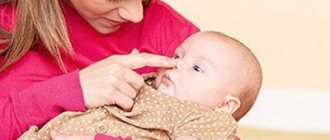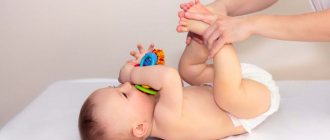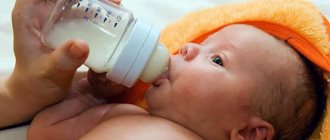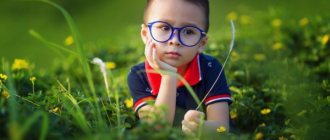Physiology of baby development at 11 months
A little more, a little more, and your baby will cross the important milestone - 1 year! But for now, the last month of this difficult first year of your baby’s life remains. You already know how to recognize what mood he woke up in, you know what he likes and what he doesn’t. You know how to make your child laugh and feel sorry for him. You have your own little traditions. For example, every morning the whole family eats porridge. Or take a walk in the park on Sundays. Another obligatory tradition is to go to the pediatrician every month. This is not at all a stupid whim of domestic doctors. The fact is that it is in the first year of a child’s life that many diseases can be identified in time and timely treatment can begin.
Mandatory parameters for the development of a child in the first year of life are measuring height and body weight. Doctors take into account several factors when measuring these parameters:
- height and weight of the child at birth
- gender of the child
- term or prematurity
- type of feeding (breastfeeding, artificial, mixed)
- type of complementary foods introduced (pedagogical, pediatric, mixed complementary foods)
- genetic predisposition (height and weight of parents)
- developmental features (teething, illness, all options or remove.”>etc.)
- the presence of congenital diseases and pathologies
Table of height, weight and head circumference of 11-month-old boys according to WHO
| Very low | Short | Below the average | Average | Above average | High | Very tall | |
| Height, cm | 67,6 | 69,9 | 72,2 | 74,5 | 76,9 | 79,2 | 81,5 |
| Weight, kg | 6,8 | 7,6 | 8,4 | 9,4 | 10,5 | 11,7 | 13,0 |
| Head circumference, cm | 41,9 | 43,2 | 44,5 | 45,8 | 47,0 | 48,3 | 48,9 |
Table of height, weight and head circumference of girls 11 months according to WHO
| Very low | Short | Below the average | Average | Above average | High | Very tall | |
| Height, cm | 65,2 | 67,7 | 70,3 | 72,8 | 75,3 | 77,8 | 80,3 |
| Weight, kg | 6,1 | 6,9 | 7,7 | 8,7 | 9,9 | 11,2 | 12,8 |
| Head circumference, cm | 40,5 | 41,9 | 43,2 | 44,6 | 45,9 | 47,3 | 48,6 |
Diagrams of height, weight and their ratio for boys and girls presented on the same WHO website are more clear.
Boys, height
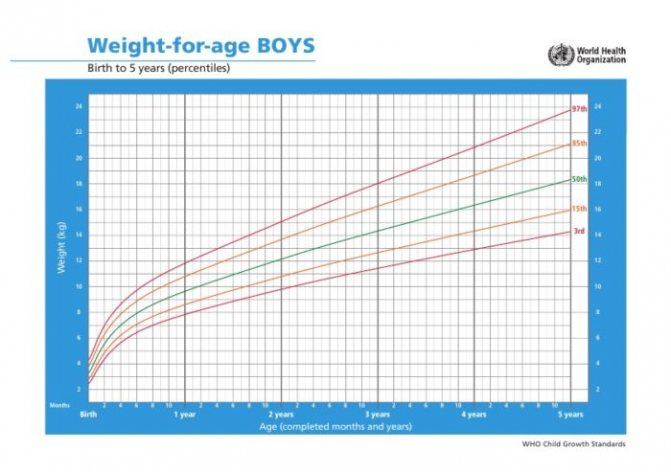
Boys, weight
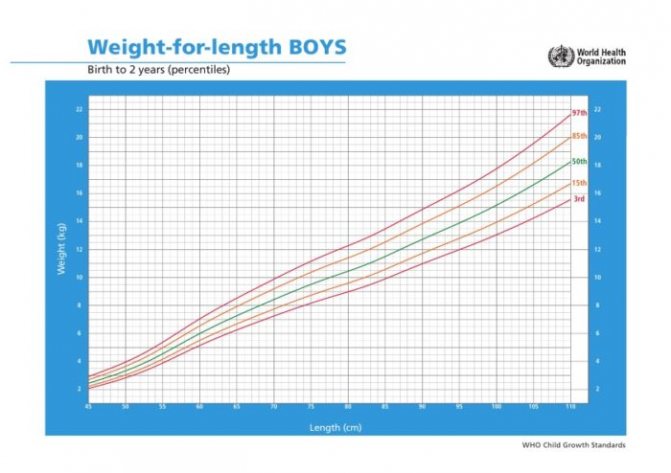
Boys, height and weight ratio
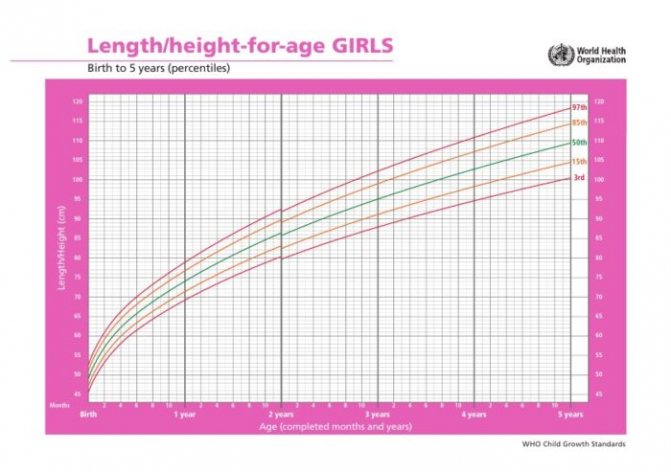
Girls, height
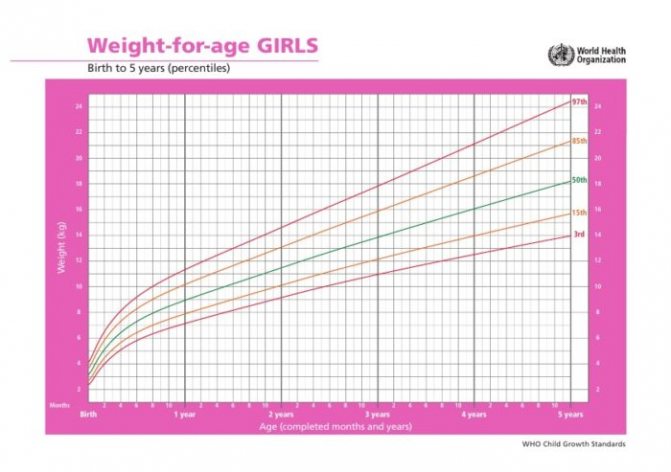
Girls, weight

Girls, height and weight ratio
Domestic pediatricians adhere to several different parameters:
| Baby at 11 months | Girls | Boys | ||
| Weight, kg | Height, cm | Weight, kg | Height, cm | |
| 9,805±0,800 | 73,60±2,73 | 10,470±0,985 | 74,90±2,55 | |
By 11 months of a child’s life, the central and lateral upper and lower incisors have erupted. But it is worth remembering that the teething process is individual, and some children may meet their first birthday with only one or two teeth. If by the age of one year the baby has not yet acquired teeth, then you should consult a doctor.
sleep and wake patterns generally remain the same.
| Number of feedings | Breaks between meals | Waking period | Daytime nap | Night sleep |
| 4–5 times | 3.5–4.5 hours | 2.5–3.5 hours | 2 times: 1st sleep -2.5 hours; 2nd sleep - 2 hours. | 10–11 o'clock |
However, some babies already at this age can switch to one daytime nap, which increases over time. If you notice that your child is calmly, without signs of fatigue, awake for more than 4.5 hours in a row, then he is ready to switch to one nap during the day. Don’t torture yourself and your baby by putting him to bed at the normal time. Just as before, you should follow the rituals of preparing for night sleep - quiet games, water procedures, a fairy tale from dad or mom before bed. It is not uncommon for nighttime sleep to deteriorate at 11 months. Before you panic, remember if your baby is teething, maybe he recently learned to do something new, or the day was too full of impressions. All this can lead to poor night sleep.
Features of developmental activities for children 11 months old
Since a child at 11 months is completely dependent on adults, adults must understand exactly what he wants. As a rule, it is enough to follow a few simple recommendations.
- Do not limit your child's physical activity. By the age of one year, many already know how not only to crawl, but also to walk quite quickly - let them walk if they like it so much. Have you already taken care of the security of your apartment in advance?
- There is no need to rely on the child’s prudence and the effectiveness of his prohibitions - it is better to remove from reach in advance everything that could be dangerous: sharp, fragile, traumatic objects, etc.
- Consider your child's age, size, temperament and other individual characteristics. Don’t rush him, don’t force him to rush behind you and get nervous that the baby is late. Don't needlessly scare your child.
- Accustom your child to everyday activities: always explain all your actions, and sometimes even ask for help - for example, ask to take baby juices out of the bag or put vegetables into a bowl.
- Do not scold for failures or for the fact that the child deliberately destroys objects. The time will come - and he will definitely learn to create, but for now, perhaps, he only knows how to destroy. This is also a stage of development, and no less important.
What should a baby be able to do?
Your baby is developing very quickly. Every day he pleases you with new skills. He might even surprise him with something you didn’t teach him. Repeats many things after parents or older brothers and sisters.
At 11 months the child:
- Continues to crawl actively.
- Sits down confidently and stands up quickly with support. Walks leaning on a rolling toy or one (two) hands.
- Some children can stand on their own without support and take their first steps.
- Understands the first generalizations in speech, for example, find ALL the cubes, give ANY doll, etc.
- The first babbling words appear in speech, for example, “give”, “na”, “av”, “mom”, “dad”, etc.
- The child has an extensive passive vocabulary .
- Shows independence, for example, tries to take off or put on socks himself, drinks from a bottle or cup himself, eats with a spoon.
- Understands the words “no” and “cannot”. Of course, he doesn’t always follow his parents’ instructions.
- Knows how to say hello and goodbye (waves hand).
- Able to answer “yes” or “no” to adults’ questions (with a nod or shake of the head).
- He shows his emotions not only by crying.
- Coordination of movements increases. The baby holds toys tightly and can grasp a small object by holding it between his thumb and forefinger.
- Masters new skills and can repeat them at the request of adults, for example, putting on and taking off rings with large holes, putting cubes in a box.
- A pointing gesture appears (normally, its appearance is before 1 year and 3 months).
- Manifestations of ingenuity appear. For example, he may guess to push another object off the table with one object.
- Signs of the first separation crisis (one year crisis) may appear. The child realized that he could manipulate adults by crying or screaming. If you look closely at the baby, you will notice a complete absence of tears and an attentive gaze studying the reactions of others.
Passive vocabulary includes words that we know (learn by hearing or reading), but do not use ourselves. There can be a lot of examples: you ask the baby: “Where is grandma?”, and he points his finger at the corresponding family member or moves and fixes his gaze on her - this means that the word “grandmother” is already in his passive vocabulary, despite that he doesn't say it yet.
ivchev
https://kukuriku.ru/passivnyj-i-aktivnyj-slovarnyj-zapas-rebenka/
It is important to remember that all children develop at their own pace. You shouldn’t rush your baby to walk, or lament that he still doesn’t assemble the pyramid. Enjoy your child and his smile! But, if you are very worried, contact your pediatrician. He will definitely examine the baby and, if necessary, refer you to other specialists. Be attentive to your baby.
Eleventh month of life - exercise
BIRTHDAY is just around the corner !
You are probably already thinking about this date, imagining how you will organize this family holiday, who you will invite to visit, how you will congratulate the baby on this significant day?
And, of course, gifts!…
So, your baby is eleven months old . In the last publication I wrote about games for a 10 month old baby.
Let's see what he can already do:
- crawling on the floor - sit down; pull yourself up using your hands to stand up; stands alone without support or holding one hand; take small steps using support; turn around, bend over for the toy, take it with your hand and straighten up. In general , the baby will need another 3-4 months to learn to stand up and walk . Not everything works out right away, it is important to constantly encourage him, not to rush him, to praise him for any successes! Small victories make big successes - remember this.
- within 5-10 seconds. manipulates a taken toy , examining and feeling it from all sides, can fulfill the requests of mom or dad to place a cube on a cube, remove and put rings on the rod, find a hidden object, insert and collect the components of toys (cups, boxes)
- consciously uses a spoon and cup for their intended purpose . Makes attempts to eat on his own.
- two-syllable sentences “give kitty”, “bai lala” may appear in speech, and the baby can pronounce it in his own way. Speech therapists advise not to pull back or correct the child’s speech, incl. and sound pronunciation up to three years.
- perception expands, understands the adult, his intonation, can stop the action in response to a prohibition, and wait for the adult’s reaction. The body diagram develops well - the baby can show body parts in animals and in himself. Find the nose, mouth, eyes, etc. at mom's, dad's. Knows the names of toys, and can choose a specific toy from several in the basket at the request of an adult.
As for sleep and its physiology , it is approximately 12-13 hours a day. Many people have difficulty falling asleep and staying asleep during the day or night. Some children sleep 2 times during the day, others only need one - it all depends on the baby’s temperament and the state of the body. Therefore, if problems arise: he doesn’t sleep enough, goes to bed late, or doesn’t get up for a long time in the morning, reconsider his regime. Approximately 2.5 hours are allotted for daytime sleep, which is divided into 2 parts, or remains single if the baby prefers to sleep once during the day.
It is interesting that, starting from 11 months, babies already determine their sleep patterns: they can be divided into “larks” and “night owls.” Therefore, take a closer look at the baby - what type is he? What he prefers and build a daily routine accordingly. After all, when the physiological needs of the body are taken into account, the likelihood of whims is greatly reduced.
Now let's move on to physical exercises .
We do them either half an hour after eating breakfast or after a nap. Duration: 12 minutes is enough. A minimum of clothing so as not to restrict movement is the best option: a T-shirt and panties or just panties. We walk on the rug barefoot.
Let's train our hands!
The baby lies on his back, arms and legs are straightened. Ask him to grab your thumbs or rings. Start moving your arms pressed along your body to the sides, spreading them wide, then up and down. We do everything slowly and to a rhythmic rhyme. If the baby has normal tone of the arms and shoulder girdle, the exercise is easy to perform; it is enough to do it 8 times. If the baby resists or the movements are constrained, it is better to return to the previous hand exercises.
The exercise helps strengthen shoulder tone and develops the muscles of the arms, shoulders and chest.
One-two! One-two!
It can be done when the baby stands independently and confidently. First, perform it with the baby sitting, then continue with the standing one. Place one ring in each of his arms, grab them yourself and begin rhythmically bending his arms at the elbow joint, at first slowly and gradually speeding up the pace. Afterwards you can hug the baby with his arms and tickle his sides. If you liked it, repeat the exercise up to 3 times.
In this exercise, the muscles of the arms, shoulders and chest develop well, and the baby learns to maintain balance when moving his arms.
Get it with your foot!
It is performed on your back and with your legs straight. Take a ball or an inflatable circle, place it over the baby’s legs: “Try, reach the ball with your foot!” Let the baby raise his leg and try to touch the ball. Be sure to praise, say: “That’s how Petya can do it!” Well done!" You can stimulate interest by the fact that the ball falls as if by chance after the child touches it with his foot: “Oh, what strong legs!”...
The exercise helps develop the muscles of the abdomen and lower extremities, encourages emotional contact with adults, and the establishment of communication.
Oh, he rolled away...
Suggest a useful exercise: throw a small ball next to a sitting or standing baby so that it rolls under a chair or bed (but not too far!): “Oh, the ball rolled! Let's get him? And crawl on your knees to get the ball. When you find yourself next to him with the ball, show him that you are happy. Now encourage him to follow the ball. When he gets it and brings it, praise him: “What a smart girl you are! Helped mom get the ball. Well done!".
I'm stepping over... the sea!
Place two bright ribbons side by side on the carpet and ask your child to step over them. Then increase the distance between the ribbons a little and offer to cross again. And so gradually increase the distance to 30 cm. Constantly praise and encourage the baby. If he doesn’t understand what is required, show him with your example.
Then you can make obstacles in the form of cubes, boxes and step over them. Imagine that this is a river, this is a path, and this is such a wide sea. Although the baby may not know these words in reality, he learns them passively, enriching his vocabulary.
I'm walking on the path!
Now change the previous exercise a little. Place the ribbons in parallel at a wide distance: and invite him to walk along such a path without stepping on the edges (of the ribbon). As you master the skill, you can make the track narrower and narrower.
In addition to ribbons, you can use sticks, spread out an old roll of wallpaper and draw a path on it, etc. - It all depends on your imagination
